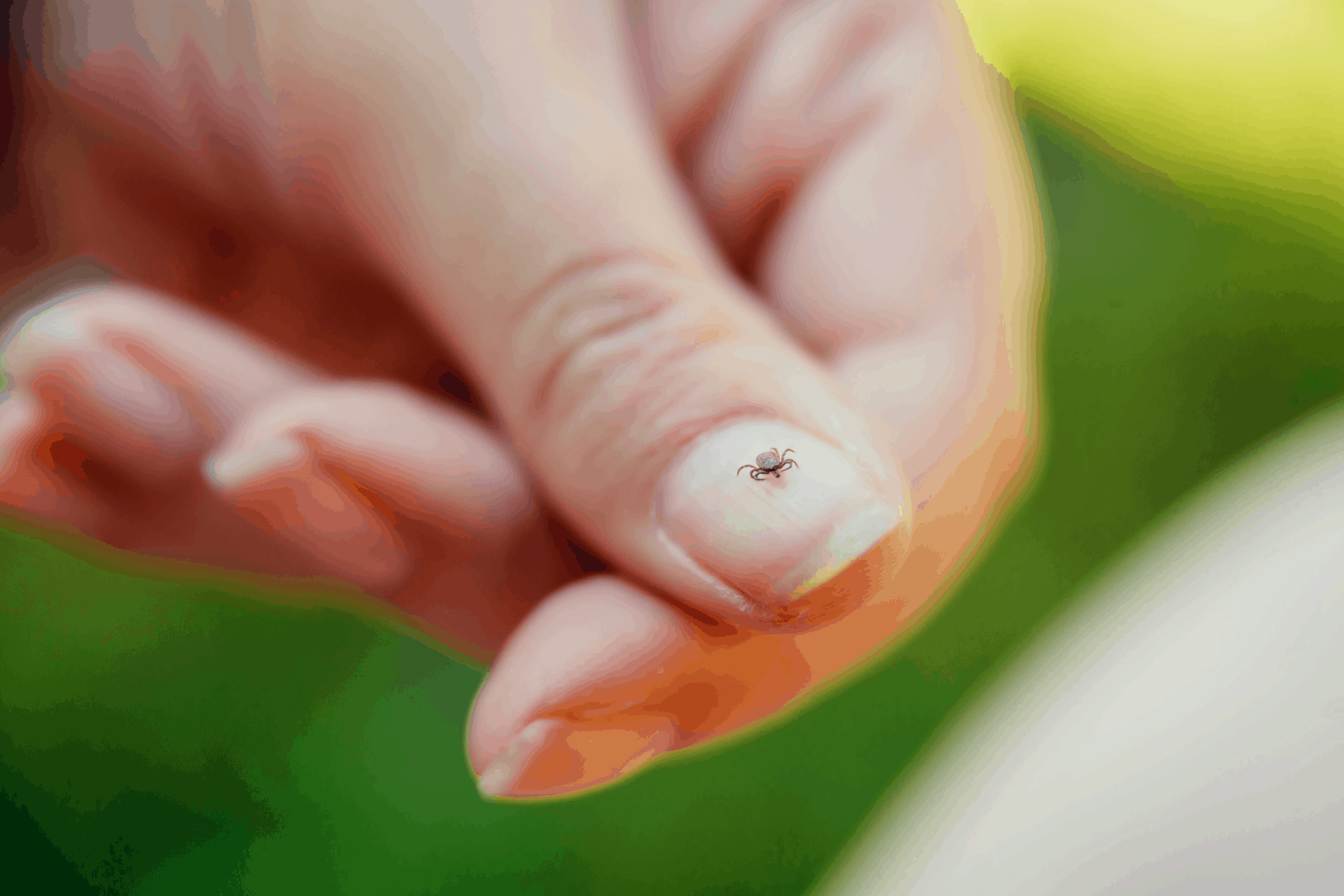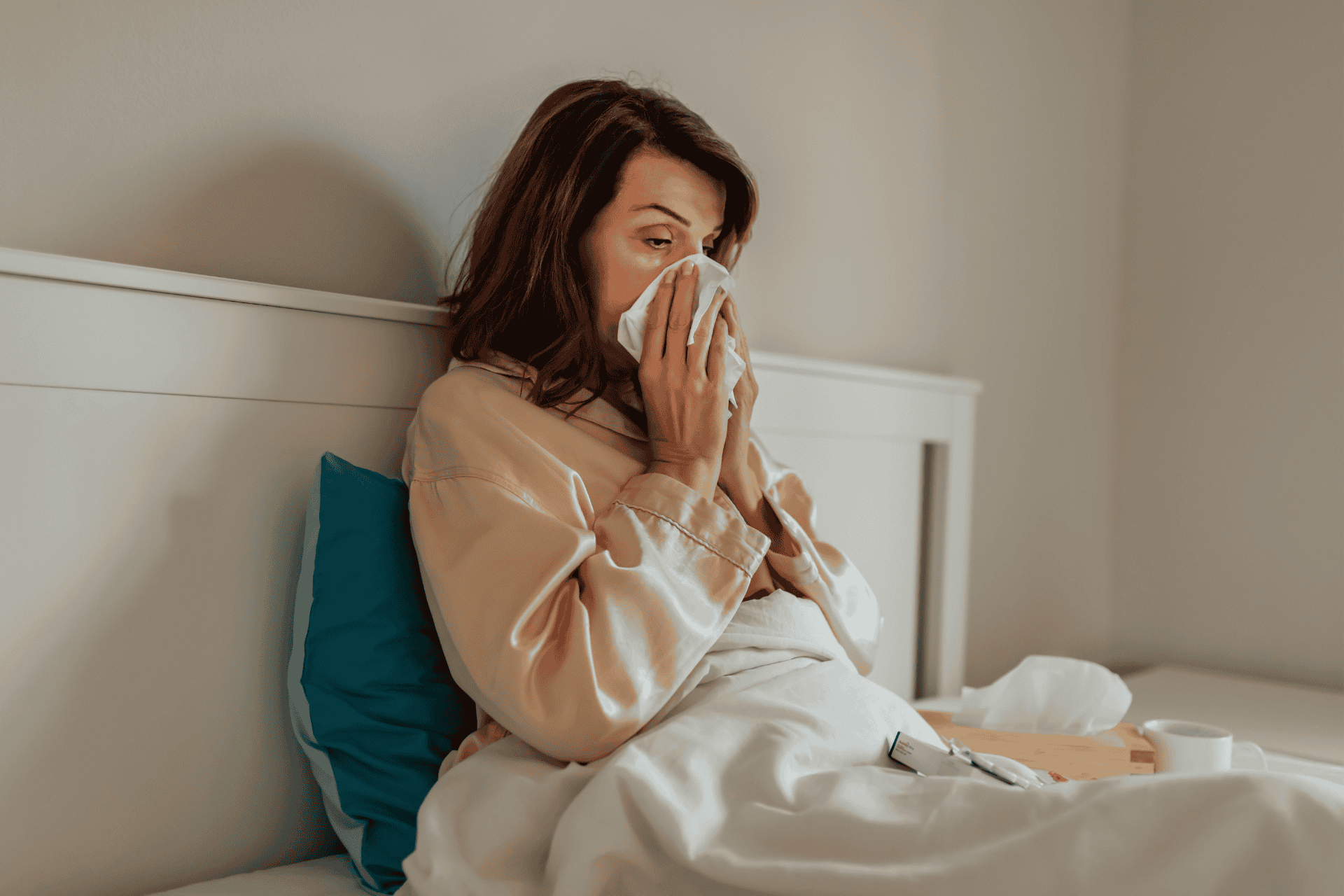“I’d rather treat cancer than chronic Lyme disease.” This was the phrase uttered by another physician to one of my patients who had just acquired a tick bite.
This may sound extreme, but Lyme disease can be a devastating and daunting condition. Every month in my practice I see patients who had a tick bite years ago and continue to suffer from inflammatory reactions, immune dysfunction, and even neurologic symptoms. And to think, all that trouble was from a tiny, long-ago tick that happened to carry the bacteria that causes Lyme disease.
And while we’ve come a long way in understanding and treating Lyme disease, as the saying goes – an ounce of prevention is worth a pound of cure. So today we’re going to dive into some simple yet powerfully effective steps to prevent Lyme disease.
Lyme Disease Symptoms
Lyme disease is an infection caused by a bacterial species named Borrelia burgdorferi. This bacteria is known for being particularly tricky and has even been nicknamed “The Great Imitator” because of its ability to imitate other conditions.
A Borrelia burgdorferi infection can trigger a systemic infection that can cause a wide array of symptoms that can mimic other conditions such as:1
- Alzheimer’s disease
- Multiple sclerosis
- Fibromyalgia
- Rheumatoid arthritis
- Chronic fatigue syndrome
- Schizophrenia
While Lyme disease can sometimes be tricky to pinpoint, there are a few specific acute signs of Lyme disease to watch for. If you notice that you’re feeling fatigued, fever, flu-like symptoms, and/or have a bullseye-shaped rash, you may have contracted this stealthy intruder.
So, How Do You Get Lyme Disease?
Lyme disease is transmitted to humans almost exclusively through the bite of black-legged deer ticks that carry the Borrelia burgdorferi bacteria. You see, when a tick bites you, it can directly inject Borrelia burgdorferi (and any other infectious microorganisms it may be harboring) directly into your bloodstream.
And what’s worse, the geographical areas where Lyme disease is a significant risk are expanding in all directions. Areas that are known to be hot spots for ticks are of the most concern – the Northwest, Minnesota, Iowa, Michigan, Wisconsin, Florida, and parts of California.
Due to urban expansion into previously undisturbed habitats for deer and mice, Lyme disease is spreading to new locations nearby and becoming an epidemic in certain counties in the United States. In fact, about 20,000 to 30,000 cases are reported in the US every year, but experts say that the actual number could be 10 times greater.2
So it’s more important than ever to understand how you can take steps to protect yourself and your loved ones from contracting this daunting disorder.
How to Prevent Lyme Disease?
Fortunately, there are some simple and effective ways you can protect yourself and prevent Lyme disease. Here are my best Lyme disease prevention tips:
- Wear protective clothing: When outside, wear pants and long sleeves to keep your skin from being exposed. Light-colored clothing is preferred, so you can easily see if a tick has made their way onto you. I also recommend pretreating your clothing, boots, socks, and camping equipment with bug repellant, such as 20-30% DEET or the preferred less toxic 20% picaridin or 30% oil of lemon eucalyptus. Studies have found that these natural repellants worked better than DEET, which is neurotoxic.3
- Walk in the center of trails and avoid heavily wooded areas: Ticks hide out in the grass, brush, leaves, and trees where they wait for their next meal to walk by. When you walk past, they leap from their hideout and onto you. So walking in the center of trails and avoiding brushing up against grass, branches, or leaf litter can keep them at bay.
- Bathe or shower within a few hours of camping or hiking: Have a friend or family member do a “tick check” before you hop in the shower. Ask them to examine your back and scalp and other areas that you might not be able to see well. Washing and drying clothes on high for 30 minutes should kill any ticks that are attached to your clothing.
- Check your dogs: Many people don’t realize that their beloved dogs (and horses, too) can carry ticks that transmit Lyme disease. Be sure to check your pets after hiking or camping in wooded areas and remove any ticks that you see right away.
The biggest key to Lyme disease prevention is avoiding ticks. But even if you follow all steps to avoid these creepy crawlers, you still might have a run-in. So it’s important to know exactly how to remove a tick if one of these sneaky bugs do make their way onto you or your pets.
How to Remove a Tick
It can be unsettling to think of one of these little buggers sinking their teeth into you. But if you do notice a tick, it’s crucial to remove it promptly and properly. The proper way to remove a tick is to follow these steps:
- Grab a set of fine tweezers and use them to grasp the tick. Try to grab it as close to the surface of your skin as you can.
- Using gentle but firm and steady pressure, slowly pull backward – avoiding any jerking or twisting.
- Continue pulling with gentle pressure. You want to avoid squeezing, crushing, or puncturing the tick as its bodily fluids can contain a number of infection-causing organisms.
- Once you’re able to pull the tick out, be sure to thoroughly wash the bite area and your hands with soap and water.
- If the tick's mouthparts are stuck in the skin, they should be left alone as attempting to remove them can cause significant trauma to your skin. As the bite heals, these parts will be naturally expelled on their own.
- Once removed, submerge the tick in rubbing alcohol in a sealed bag or container. Placing the tick in alcohol not only kills the tick, but also allows you to preserve it to be used for identification and testing if you begin experiencing any symptoms after the bite.
If you do acquire and properly remove a tick and begin experiencing symptoms, I cannot overemphasize the importance of seeking out the guidance of an experienced Integrative and Functional Medicine Practitioner. They can help you accurately identify the presence of Lyme disease and any other infectious organisms that may have made their way into your body. Then they’ll come up with a comprehensive plan to get you on the path to healing.
So, How Worried Should I Be When It Comes to Lyme Disease?
Lyme disease is a very real concern. This tricky bacteria can cause devastating symptoms that can be difficult to pinpoint and treat. While Lyme disease is certainly not a condition to be taken lightly, the good news is, there’s no need to give up your outdoor adventures from fear of contracting this nasty bug.
When it comes to protecting yourself and your loved ones from Lyme disease and other tick-borne diseases, a little preparation can go a long way. Follow the steps outlined in this article to ensure your summer adventures are fun and safe at the same time.
And if you’re looking for more ways to protect yourself and put your health at the top of your priority list, I encourage you to head over and check out my blog. It’s full of helpful and practical resources just like this to help you prioritize your health and well-being. And if you’re ready to take it to the next level, you can sign up for my newsletter and get all my best advice, insights, and resources delivered straight to your inbox. All you have to do is enter your name and email address in the form below.
Now it’s time to hear from you. Were you surprised to learn just how tricky Lyme disease symptoms can be? What steps are you taking to protect yourself and your loved ones from tick bites this summer? Leave your questions and thoughts in the comments below!
References:
- Lyme disease: the latest great imitator – PubMed (nih.gov)
- Lyme and Other Tickborne Diseases Increasing | CDC Online Newsroom | CDC
- Mosquito Repellent and Bug Spray: Picaridin and Lemon Eucalyptus Win | Time
* These statements have not been evaluated by the Food and Drug Administration. The product mentioned in this article are not intended to diagnose, treat, cure, or prevent any disease. The information in this article is not intended to replace any recommendations or relationship with your physician. Please review references sited at end of article for scientific support of any claims made.



















16 Comments
Thank you, thank you, thank you! So many doctors refuse prophylactic antibiotics and patients wind up sick for years. I am one of those patients. I went to my doctor years ago with Bell’s Palsy and no feeling on my left side. I went to a hospital but was given no medication. I remained sick off and on for seven years and have permanent neuropathy in my left foot. I was told there was nothing wrong with me, to go home and get pregnant, and that I was making a mountain out of a molehill. Even when I did find a doctor who believed I had Lyme, he made me wait for the test results to come back before prescribing me antibiotics. Long story short, prophylactic antibiotics would have been worlds better than the six weeks of Probenicid and Doxyclycline I took and the four weeks of IV Rocephin I took after that. It is nice know some doctors really do understand Lyme Disease and hear their patients.
Dear dr Jill I have just finished reading your article on MTHFR gene mutation and was diagnosed with MTHFR Mutation :C665t Heterzygous .i have symptoms like 1)weight loss 2) generalized and localized puritis 3 ) low WBC 4)on rt side of my abdomen dark discoloration very forgetful and groggy heavy feeling on top of my head5) any time I took supplements I don’t feel good it’s hard to explain 6) heart rate in 48 7)lack of energy just tired 8) sad not motivated to do anything. 9)low blood sugar and other things can’t remember all.
I had been doing research for my daughter who has multiple problems where Homocysteine level was elevated she is the one with Pituitary Adenoma depression AMD a lot of other things, this is how I came across your blog I went to several dr and specialist one of which was my Oncologist forgot to tell I had Radiation for 1stage breast concer over 9 yrs.
to cut a long story short I asked him to test me for the MTHFR which I mention earlier is pos he also tested me for Lyme disease and that is also pos.
Now here is a big problem for me , he did start me on Docycline 100 mg bd for supposedly 1 mth but 1 1/2 wk into taking it I started to experience subtle nausea and shortness of breath he said I should stop it for a day and a half and start with just100 mgs daily which I did I then started to experience a few episode of burning on micturation more shortness of breath worst memory problems depression bilateral ankle and on top of both feet pitting odema and black and blue marks one on top of my rt calf and other on rt thigh..
D/C it right now going about 1 1/2 wks ago .
No further swelling in ankle or on top feet black and blue marks totally gone, depression foggy brain and breathless still in place.
BIG QUESTION WHAT DO I Do?
No one seems to know any thing about MTHFR and I reacted to the antibiotic in a bad way.
CAN YOU GIVE SOME SuGGESTION.
Thank you Rosemarie
Hi Rosemarie,
It is quite likely your reaction to the antibiotic had nothing to do with your MTHFR mutation. Many people live long healthy lives with this mutation and it is not a medical condition, just an underlying predisposition to process folate less than optimally. There are patients who find out they have MTHFR and focus exclusively on this as the root of their problems and most of the time it is not. I suggest finding a good functional medicine doctor near you to evaluate for gut dysbiosis, toxic exposure, autoimmunity and other inflammatory processes and fix these before focusing on the MTHFR SNP. One simple way to start is a comprehensive elimination diet, like this one, getting rid of all sugar and processed foods.
warmly
Dr Jill
Hi. I suggest to not use tweezers as the tick may regurgitate and bring disease to the individual with a bite. Much better to you a tick lasso and remove the tick by lifting it off the skin. When you squeeze on the tick, you are more prone to disease, so you run a greater risk of infection using tweezers.
I have had Lyme Disease six separate times. There have been 13 cases of Lyme Disease in my home. Half of them were me. One was my oldest daughter and the rest were my dogs. My daughter had it for 2 years before I figured out why her leg kept swelling up for a few days, every 4-6 months. She has had no symptoms for over 3 years. The most recent case was our 3 year old Maltese/Shi Tzu Maggie, who presented with the symptoms in late April 2016, 3 weeks after I found a bloated tick above her eye the morning after a walk in the forest where we live. The last time I had it was during the summer 2015. I felt that my immune system was dealing with it, because it’s seen this before. I studied it inside my body for two weeks and then decided that I learned enough. My immune system needed a booster, so I took what I always take for Lyme. Every time a person or pet in my home gets Lyme Disease, we take a homeopathic remedy for the symptoms of Lyme Disease and we have fully recovered. It hasn’t been a big deal for us, honestly. If you have questions, I’d be happy to talk about our experiences with Lyme. Email: johnna@jvwhealthypeople-pets.info
Yes I’m with you! Not a big deal there are things out there. I should clarify. It CAN be a very big deal. For many. But it IS treatable. Totally agree! I won’t put chemicals on my body and impair my immune system. If I get it again I know what to do!
Hey Jill,
What are your thoughts on mosquito/tick repellent for dogs? They are supposedly safe and effective, but Im always leery of that.
Thanks!
Stacy
Hi Stacy
I like the natural eucalyptus lemon based repellants for animals, too
warmly
Dr Jill
I highly recommend investing in some pre-treated clothes — socks, pants, shirt, kerchief, hat — with permethrin. Clothes are good for 100 washes. Or they can treat your own clothes. Company is InsectSheild. (No financial interest).
This way every square millimeter of clothing is covered and will kill ticks and mosquitos on contact. And the clothes are ready and waiting so you won’t make the mistake of “oh, I’m too much in a hurry this one time to treat my clothes and skin”.
It’s a very small price to pay to prevent tick borne and mosquito borne illnesses.
Hi Dr Jill, thank you for your info, what are your thoughts on using Diatomaceous Earth to dry up a tick and have it die/fall out that way?
I have not heard of this method but it may be effective….
Ok thanks!
Western medicine might think lyme is tricky but there are other very non invasive ways out there! I won’t hijack the blog but I’m having success with very little side effects, no antibiotics, and didn’t have to mortgage my house. You just have to look outside the box! It is very treatable! Don’t let this scare you! Yes lyme can be debilitating if left to multiply and grow and if your body is already unhealthy and able to deal with it. So do what you can now. Build your immune system and make good choices to give yourself the best shot.
Just got a bite last week. Just what DID you do?
And a side note: The tick was discovered while in the Chiropractors office. He applied peppermint oil over the are every few minutes for the hour I was there (ticks don’t like it) and the tick backed our, slowly, making it much easier to extract intact.
I would like to hear more about the other ways to treat lyme. Please share.
Thank you for the article. What integrative and functional medicine practitioners can you recommend in Colorado?
Share: